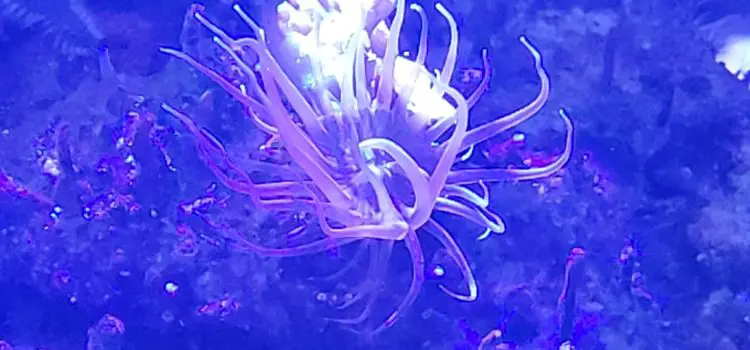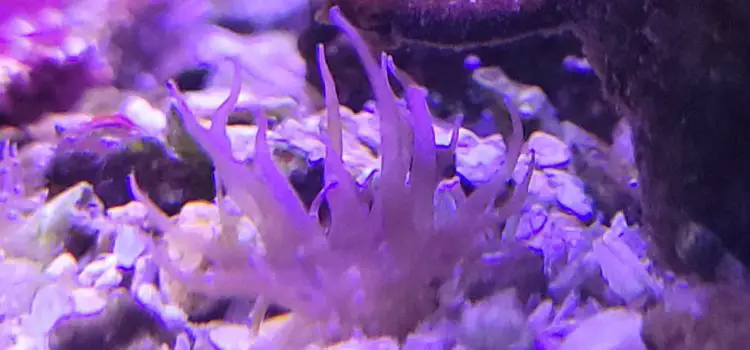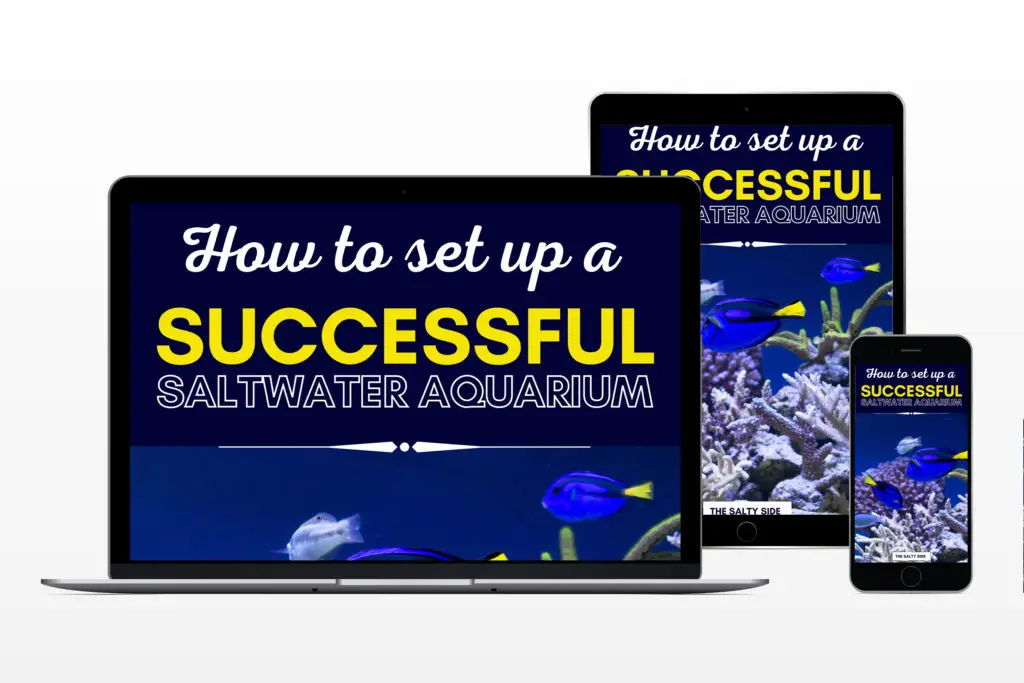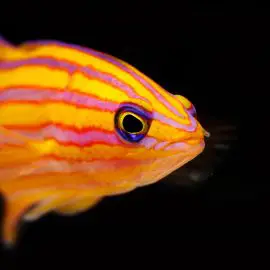How To Get Rid Of Aiptasia In a Saltwater Aquarium
Of the many hitchhikers that find their way into our reef tanks, Aiptasia tend to be one of the more annoying. You may have inadvertently introduced it on live rock, thinking it was cool at the time. You might already know what Aiptasia is, but somehow it has managed to slip past your tank intro protocol. Before you know it, you have the little menace spreading and living its best life everywhere. We look at how to get rid of Aiptasia in your reef tank.

What are Aiptasia?
What causes Aiptasia in a reef tank? If you are reading this article, and you have managed to have a look at your new unwelcome resident, you would have realised that it looks a lot like a small anemone. You would be right in that assumption. Aiptasia belong to a group of invertebrates in the anemone family. They are classed as a pest species because, not only can they rapidly replicate both sexually and asexually, but they also carry a sting that can irritate both corals and fish alike. Asexual reproduction refers to their ability to grow into an adult from a remnant, which is why manual removal is not often very successful. If you experience a mass invasion, they have likely reproduced sexually and released free-floating polyps into the aquarium, which then establish themselves. Great news, not!
How does Aiptasia get in your tank?
As a common hitchhiker, Aiptasia is often introduced into a new system along with live rock. Unfortunately, many new reefers end up asking , ‘How did I get aiptasia?’, after they find out what that curious creature is on the rock they have just bought, only to discover it is not as cool as they thought it was. For this reason, it is extremely important to buy your live rock from a reputable source.
Another likely source of introduction is on snail shells or frag plugs. Again, this comes down to buying from a reputable source. If you have bought a coral frag from an unknown seller who already has Aiptasia in their tank, that frag may have had a remnant of an aiptasia on it that the seller has scraped away, but invisible to the naked eye. Unfortunately, coral dips do not kill Aiptasia either. That fragment has now found a new home, but how do we get rid of Aiptasia?

How to remove Aiptasia from frag plugs?
The unintentional introduction of Aiptasia can normally be attributed to frag plugs. But how to get rid on Aiptasia on a frag plug or disc? If the anemone is visible, do not be tempted to scrape it off with a razer blade. Even the smallest remaining cell will grow into an adult.
Whenever possible, replace or remove the frag plug completely. This can normally be achieved by sliding a utility blade under the frag and prying it from the plug.
If the frag cannot be removed from the plug or disc, try brushing distilled vinegar on the exposed surfaces of the plug, being sure not to touch the coral. If possible, scrub the surface too with a toothbrush.
What coral dip kills Aiptasia?
Unfortunately, most of us would not be sitting in this position if coral dips were affective. At the time of writing this article, there was not an effective Aiptasia killing dip. Iodine dips have no effect on them and peroxide dips, normally used against dinoflagellates and other algae have been tried, but Aiptasia are far too robust and tenacious. The peroxide needs to be fed directly into the anemones mouth.
What is the best way to get rid of Aiptasia?
There is not a simple answer to this seemingly simple question. In fact, there is an entire industry that has evolved around Aptasia eradication. You have at your disposal the varied choices of DIY tricks, branded formulas made to feed to them, and natural removal using fish or inverts. Which method works is dependant on your individual situation. Below we will look at every known way to show you how to get rid of Aiptasia.
How can you manually remove Aiptasia from a saltwater aquarium?
Manual removal of Aiptasia is limited to a very small number of scenarios. Ask yourself if you are going to damage the Aiptasia when it is in the tank, in the process of removal. If the answer is ‘yes’, it is time to move on. I have been asked, ‘Can you pull out Aiptasia?’. The answer is a resounding no. This will encourage a population explosion when the separated pieces become new anemones. The smallest cut can release reproductive cells into your water column.
Removable items: If the Aiptasia is on an item you can remove from the tank, such as a wave maker or glass scraper. Remove the item from the tank and run boiling water over the anemone, scrubbing it away with a toothbrush. Make sure that area is thoroughly cleaned before replacing the item.
In the sand: If you have noticed the emergence of an Aiptasia in the sandbed, the easiest and most thorough method of removing it is to siphon it out with the sand, and discard the lot. Do not use a gravel siphon, because this will only tumble it around and deposit it back in your tank. Rather use a hose thick enough to suck the gravel up.
Live rock: You have the choice of removing the live rock and boiling or bleaching it, but this should only be an option when you have exhausted all others.
Just starting out in the hobby?
Get your copy of How To Set Up A Successful Saltwater Aquarium ebook today.
This ebook will help to guide you past the mistakes I have made over the years.
Going down the DIY route to get rid of Aiptasia
The DIY method is based on hundreds of other reefers trying them out before you have. Rest assured, they are safe to use. Whether or not they work is another story. Some work for some hobbyists and not for others. Each one of these are reliant on the Aiptasia being large enough to feed them. If the anemone is too small, you will not be able to get the syringe head close enough to the Aiptasia before it withdraws.
Lemon Juice: Finally something other than pancakes to use lemon juice with. Joking aside, many reefers have been successful in knocking down an Aiptasia population using lemon juice. The aim is to get the syringe close enough to the anemones mouth, without disturbing the tentacles, to feed directly in the hole.
Boiling water: Replace the lemon juice with boiling water and use the same technique. The trick is to be that close that the boiling water will get rid of Aiptasia and does not dilute into lukewarm water that the Aiptasia will laugh at.
Hydrogen peroxide: Using the same technique as lemon juice and boiling water, only this time, peroxide. Hydrogen peroxide is safe to use in small doses. In fact, I choose to dose it nightly for clarity and algae control. However, just like boiling water, when peroxide meets your water it dilutes into hydrogen and oxygen. That syringe need to be very close!
Kalkwasser: A common commodity with reefers, but it is intended to be used to raise alkalinity. Using too much kalkwasser can throw your KH levels out.
There are other DIY methods, but if you have tried the above and they have not worked, it is time to break out your card and try something make for the job.
What is the best Aiptasia Killer?
You have two option available to you to try. Both are very well known, and both are supplied with syringes enabling you to feed the anemone. Coincidentally, these are also marketed for the eradication of Manjano anemones. Red Sea Aiptasia-X is one of the companies oldest products, and has also become a reliable method (other than natural) to get rid of Aiptasia. Joe’s Juice is the next favourite alternative remedy.
No products found.
How fast does Aiptasia-X get rid of Aiptasia?
Red Sea Aiptasia-X is extruded as a paste that the anemone enfolds its tentacles around, and proceeds to try and eat. In doing so, the result is pretty much instant. The Aiptasia withdraws and you may not see it again. Occasionally it may come back up, but you just repeat the procedure again.
Any drawbacks to Aiptasia-X?
Red Sea Aiptasia-X is completely reef safe, and you do not need to worry about it floating around your aquarium. The only drawback is that you will only be able to use it on accessible Aiptasia. If you have anemones under rockwork, or those you simply cannot reach, then Aiptasia-X will not be a good choice for you.
How get rid of Aiptasia naturally
You may have tried manual removal, and you have probably tried DIY and Aiptasia-X. Eventually most of us have ended up adding a fish, or invert into the equation to help stack the odds against the Aiptasia (who seem to be winning!)
What will eat Aiptasia in a reef tank?
There are three invertebrates known to be predators of Aiptasia, and two fish. Your choice of control will largely be decided on the type of reef tank you have, and the risks you are likely to take by introducing something that could potentially consume more than just Aiptasia.
Hermit crabs: The unsung hero of saltwater tanks, and surprisingly they have an appetite for Aiptasia. They are the safe choice, as they will only continue eating algae and detritus once the Aiptasia are gone. However, like all animals in a reef tank, they have their own tastes. You may be unlucky and introduce hermit crabs who would rather not touch the Aiptasia.
Peppermint Shrimp: Probably the best known and easiest to obtain predator of Aiptasia. Peppermint shrimp can be confused with similar looking that that take no notice in Aiptasia. Therefore, it is important you familiarise yourself with the shrimp so you know what you are looking for, and have the latin name to hand (L. wurdemanni). Peppermint shrimp literally pummel the Aiptasia to death, and can be very interesting to watch. It got rid of my infestation years ago using these shrimp. Be aware that they can also be partial to zoanthids when Aiptasia run out, so it is important to keep them well nourished.
Berghia Nudibranch: This is an Aiptasia eating sea slug and is a natural predator of Aiptasia. The nudibranch has no interest in anything else in your reef tank. It is completely reef safe.To really make a dent on your Aiptasia population, it is suggested to add 4 or 5 at the same time and watch them go to work. As they consume the Aiptasia their gills turn a dark bluey purple. The best place to purchase nudibranch is here.

What is the best fish for eating Aiptasia?
When considering one of the two fish who will willingly eat Aiptasia, be aware that both have their limitations and consequences. You may end up with a fish that does the job and lives happily ever after in your community tank, or you may have one die and the other destroy your corals. Make your decision knowing the inherent risks.
Copperband Butterfly: When considering addition of a Copperband, you really need to think about the wider implications of that decision. Yes, they are a natural predator of anemones in general, even your prized bubble-tip, but they also snack on other sessile invertebrates like sponges, tubeworms, feather dusters and clams. However, the most concerning statistic is their high mortality rate in saltwater aquariums. They are an extremely difficult fish to keep alive once their natural ‘live’ food source is gone.
Aiptasia Eating Filefish: As the name suggests, this Filefish is a ravenous Aiptasia predator. They should only be housed individually in an aquarium, no smaller than 30 gallons, as they are known to be very territorial towards its own species and other smaller fish. The drawback with Aiptasia eating Filefish is once the job is done they are not shy about snacking on other LPS and soft coral if they become hungry.
Conclusion
Aiptasia anemones can be a nightmare when they start spreading. However, if follow these recommendations and spread your bets among the many avenues of eradication, something is bound to pay back dividends.

Hi, my name is Craig.
I am the owner of The Salty Side.
Firstly, thank you for visiting us. If you have found this article to be informative, and you now have a better understanding of the topic, then my job is done.
If you are feeling charitable, and feel I deserve a little thank you, I thank you in advance for any support given.



